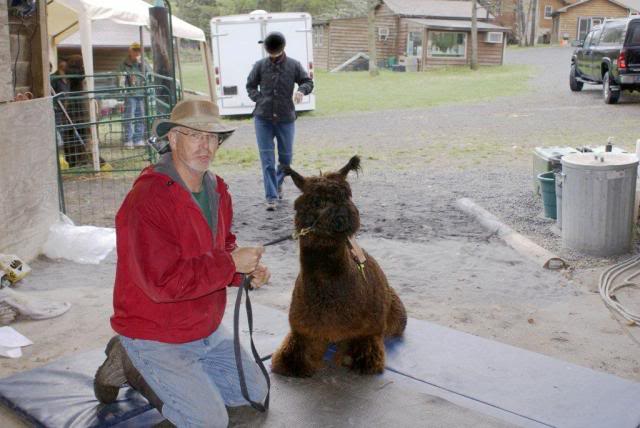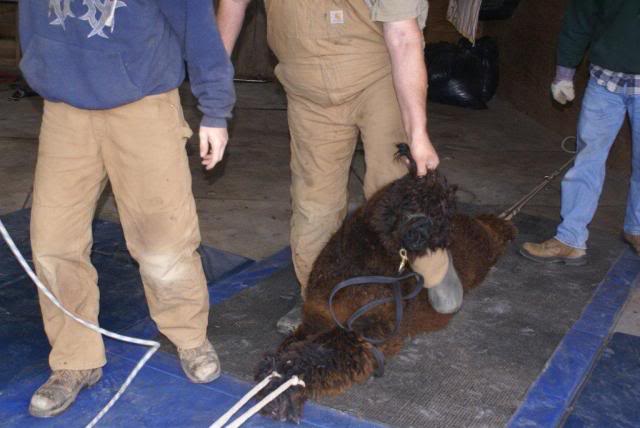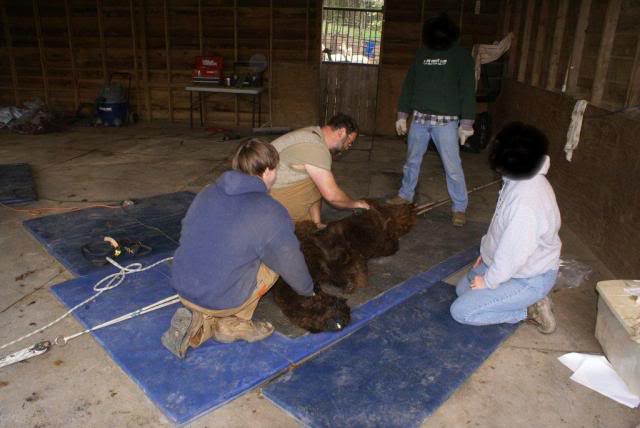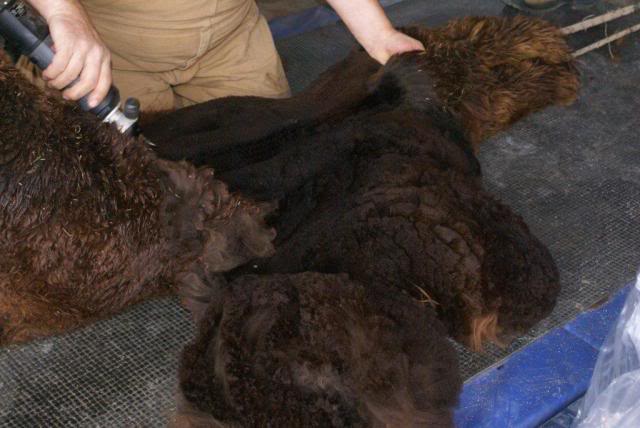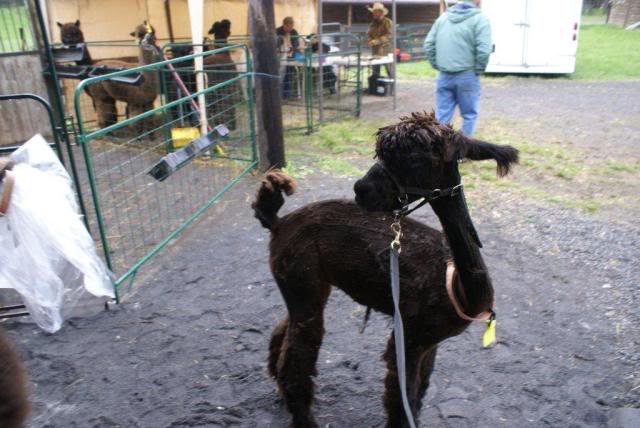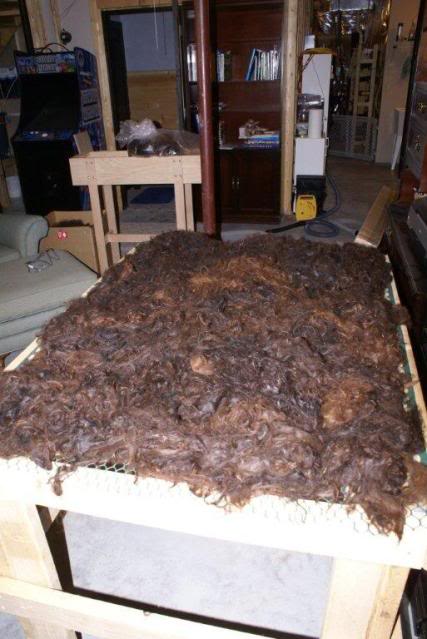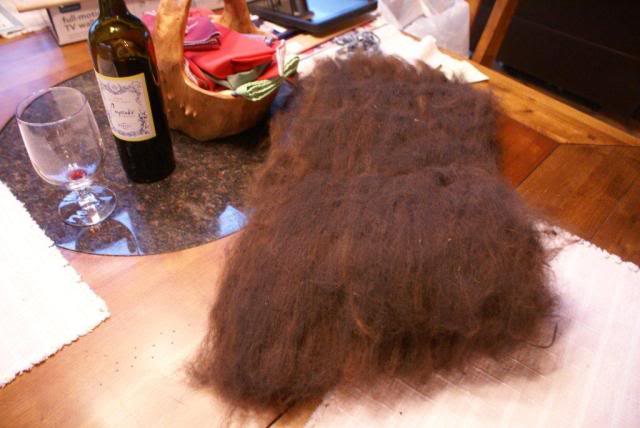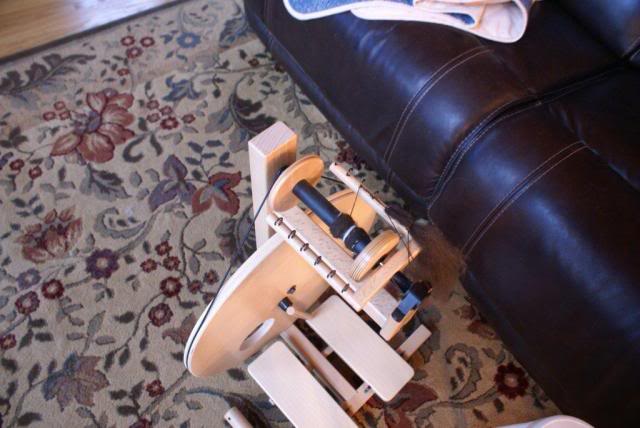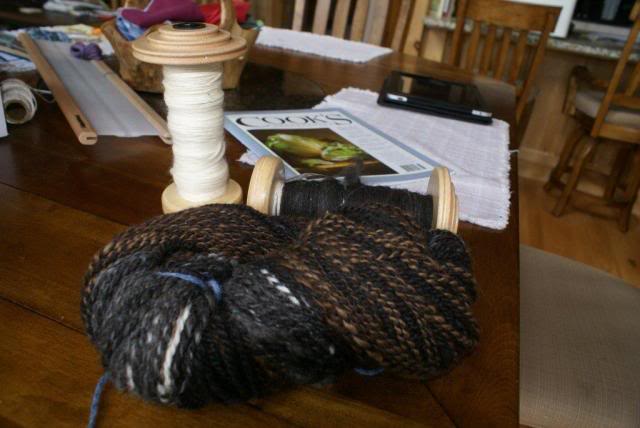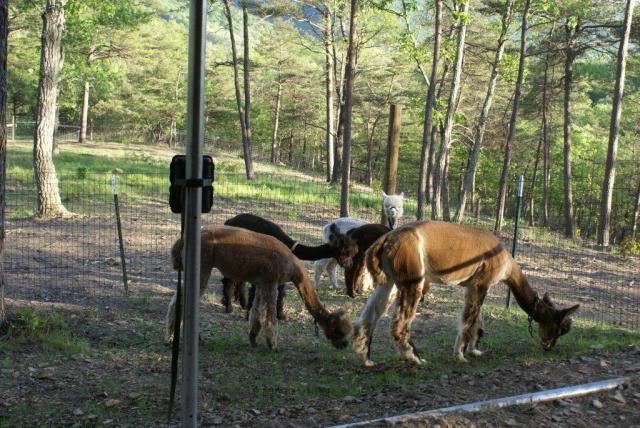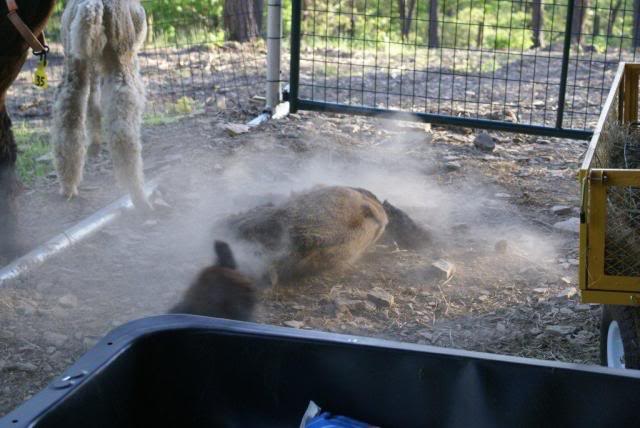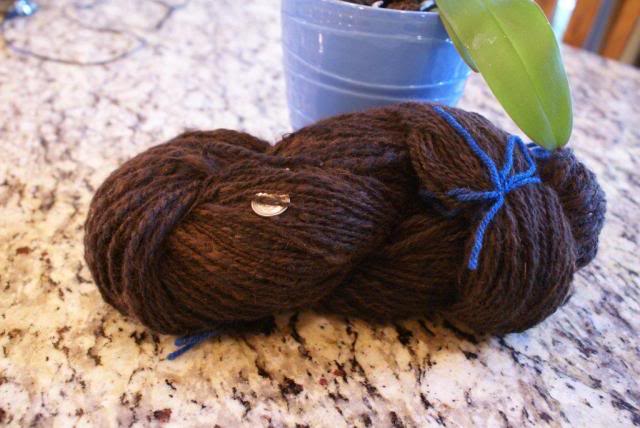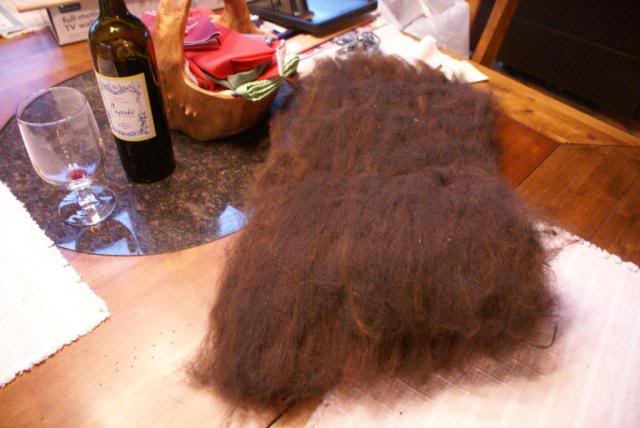Thanks for the comments and questions! Sorry about the length of this note, feel free to ignore but happy to shear/share!
Koogie, we are in WV and there are a few alpaca farms around and a fiber mill nearby as well that specializes in alpaca. There isn't a market for alpaca meat that I know of although there are a few people I've come across that do eat the meat- probably tastes like chicken? Heard a story from an alpaca farmer the other day about a man who stopped at their farm and wanted to buy a baby alpaca and take them home right away, they were having a barbecue that weekend. She said she asked him to leave and not come back.
The local fiber mill is owned by four ladies who all have alpacas as well and like many other owners, they are really trying to encourage the growth of a fiber industry related to alpacas. Every study I've seen, says it will be a specialty market for many years. For now, most of the profit in the alpaca business is from the breeding and selling of the animals with the best genetics.
One of the ladies who is a partner in the mill owns the farm where our alpacas are from and she boards a lot of alpacas for owners who don't have their own farm. A lot of the fleece from the shearing will go to their mill to process. The'll do as much processing as you want, all the way to yarn or any step in between- some spinners will have the fleece prepped to roving (long strips of fleece) and then take it from there.
We're told that there are more people like us who are doing this for the fun/hobby aspects. Animals like ours are not considered breeding stock so sell as "fiber boys" at a pretty low price. We're happy with the fleece for our six animals and the breeder/owner of the farm we are working with has been fantastic teaching us what we need to know, being up front about the business, and explaining why so many animals don't make the cut for breeding. Some of the reasons are subtle and personal preference but some are more obvious. As an example, we have one animal that is a blue eyed white alpaca that is deaf, a fairly common trait for that combination. His fleece is wonderful but there is a genetic issue that comes out sometimes. One of the others has an ear that is not formed correctly so they don't want to take a chance with breeding him later.
The industry is trending towards creating strong stock of mostly white or light colored animals based on what I've read although, like everything, there is great debate among the alpaca community on the way that it's best to move forward. The white animals with good fiber could support a textile industry someday and the white could be dyed easily. Please don't take the above as gospel as we're very new to this and are really in it for the fun/hobby aspect. Our six boys are all different colors as we think we'd like to keep the yarn natural.
It will take months to process the fiber from our small herd so hopefully, we'll get enough completed that we can also use it for projects. My DW likes to crochet and is learning to knit- I've bought a small loom and will use some of the yarn to make some scarves, table runners, place mats and that kind of thing.
Bestwifeever/W2R, no real plans to try and sell any yarn but after seeing how much of it we will end up with, we may rethink that plan. There are a number of places to sell yarn or even raw fleece (etsy for one) so might end up giving that a try. I doubt you would be able to get a much for the yarn compared to the amount of time it takes to process. When we first got our processing equipment this winter, I bought 8 oz of assorted colors of raw fleece to test and figure out how it worked while waiting for our guys to be sheared. This is the alpaca fleece that my wife used to learn to spin as well. Will add a picture of the yarn at the end. She just mixed it together as she spun it and this is two ply yarn. The bobbins in the background have single plies of yarn before they are twisted together. Some people wash the fleece before processing to yarn and others will spin the fiber first, then wash the yarn to both get it clean and to set the twist, we're going to try some both ways to see how it goes.
We've been told that as you get better at spinning, your yarn will become much more consistent in size/twist and the sort of novelty yarn you make at first unintentionally is actually very hard to duplicate by hand?
Thanks again to all, will post some more pictures of all the boys when they get here.
